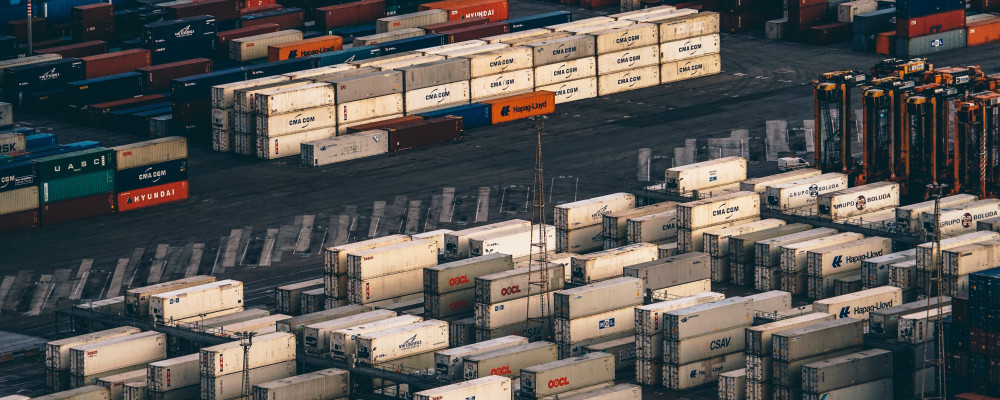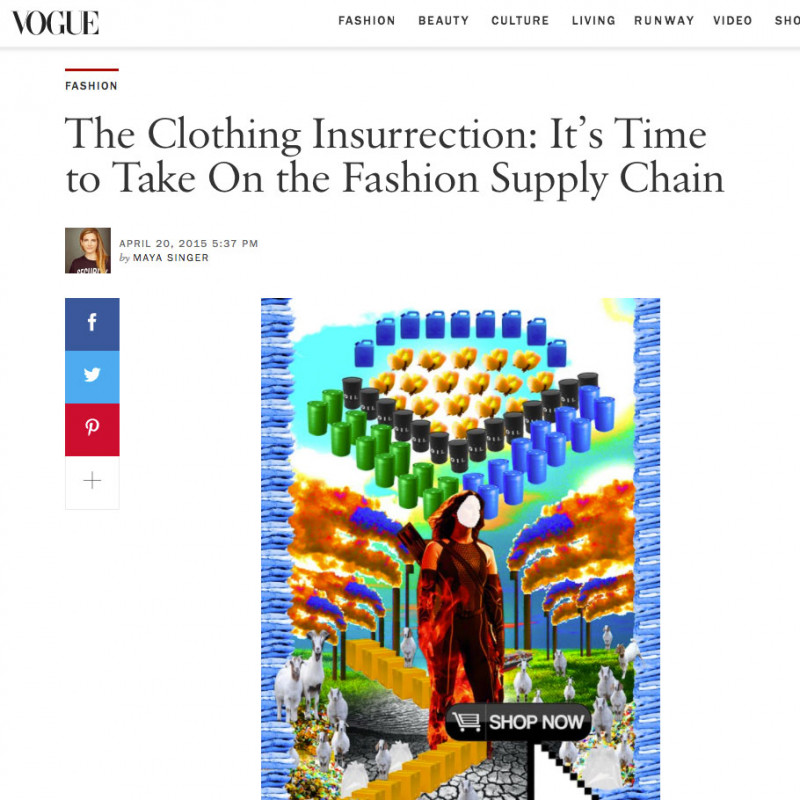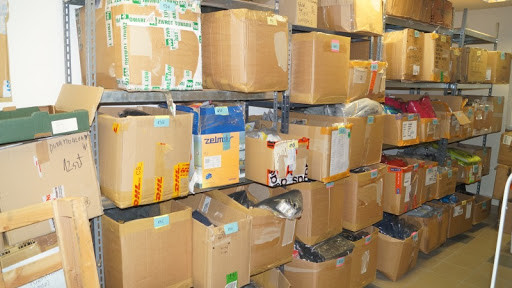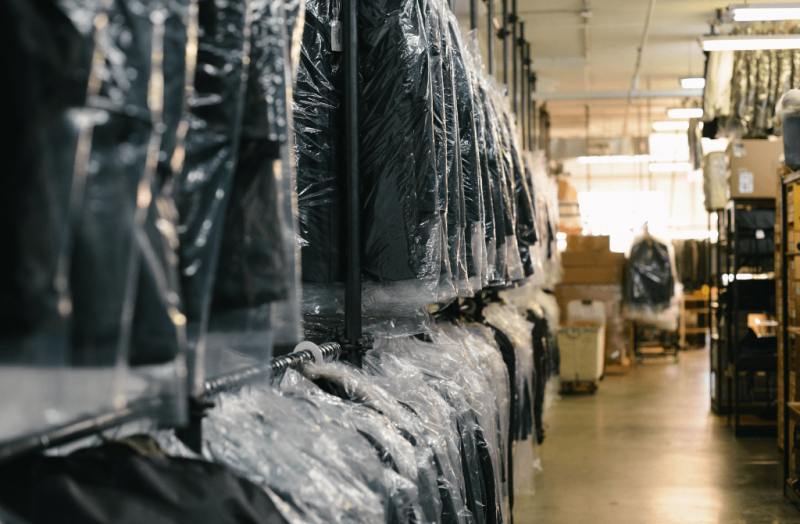
Distribution Damage: We Need Sustainable Management Of Fashion Supply Chains And Logistics
Is your distribution creating damage? Thinking about the damage caused by the fashion and textile industry, our attention usually turns toward the production line. Yet, it’s possible that distribution has bigger implications. Even Vogue, one of the biggest influencers in fashion, has taken an interest, recently publishing a lengthy article detailing the effects of transportation on the planet, and on its inhabitants. This article highlights a need for us to do much better when it comes to distribution and supply of goods. We need a commitment to sustainable management in our garment industry logistics.
@OffsetWarehouse examines how the distribution of #fashion items causes #environmental pressures. #fuelmiles

How Your Raw Materials Travel
Few businesses operate on a small and local scale these days. Most fabrics are travelling great distances from factory to consumer, with many exchanges in between. First, raw fibres are brought to a factory. The various steps of creating the fabric, cutting the pattern, making the garment, trimming, and dyeing may even take place in separate locations. Then the final product must be sent to a store or distribution warehouse. This may mean international travel in a plane or over the ocean in a freight-liner. As a result, even the most sustainable materials can start to leave a big footprint.
Often each step of garment production for #fashion happens in a different location... fuel miles! Go #local. Reduce #fossilfuels


Cutting Carbon Emissions
There is one thing that each leg of this journey has in common. Whether the product is moved by air, land or sea, there is going to be pollution involved, especially carbon emissions from the burning of fossil fuels for vehicle engines. Not only does this sully the air and water, but it also puts a bigger strain on an important resource that we already know is not only damaging, but also not limitless - oil.
The main greenhouse gas is carbon dioxide, CO2. In the UK, road transport produces approximately 25% of all CO2 emissions – around 108 million tonnes. A key UK Government commitment is to reduce emissions of greenhouse gases by 80% by 2050 (relative to 1990 levels). Emissions of CO2 from road transport have reduced significantly when compared to the overall increasing mileage. In 2015, the average CO2 emissions of new cars was around 36% lower compared to 17 years ago, reflecting improvements in vehicle efficiency enabled in part by cleaner fuels.
Though most businesses are wary of this consequence, they are often forced to compromise their aims for sustainable management of their goods and logistics in the pursuit of fiscal stability. Thankfully, an article by Huw Walters of The Guardian suggests that these two goals might actually go hand in hand. When choices are made strategically, sustainability doesn’t have to mean a loss of profits. It might even mean the opposite. According to the Carbon Trust, a 20% cut in energy costs represents the same bottom line benefit as a 5% increase in sales. On average, 25% of an organisation's electricity costs come from lighting. By making small changes, a business could cut their costs by up to a third while reducing their carbon footprint and improving the working environment for staff.
I am always pleased when I find a company that is doing this well. For example Stella McCartney has built sustainability into the brand’s initial appeal, promising that every aspect of the business is conducted as responsibly as possible, sourcing locally, reducing waste, and even running entire stores on wind energy.
@OffsetWarehouse fangirling on @StellaMcCartney for their commitment to #sustainability down to every product, store and package! #slowfashion


Waste In Packaging
Speaking of waste, there is another component that is too often ignored. Every time I receive a shipment of new textiles, there is an extra component that I contend with. From plastic wrap to cardboard boxes, tissue paper and inserts - a mountain of package waste follows every transaction. It can be a really frustrating reality for companies who do everything else right in committing to zero waste fashion in the design and production stages. And I know that when I worked in a high street clothing chain store (who shall remain nameless!) the thrice weekly delivery of new garments resulted in balls of un-recyclable cellophane that dwarfed me in size! We didn't even reuse the cardboard boxes which were perfectly intact!
In 2014, 162.6 kg of packaging waste was generated per inhabitant in the EU. This quantity varied between 48.3 kg per inhabitant in Croatia and 219.5 kg per inhabitant in Germany. The UK was ranked 6th worst, generating a staggering 175 kg (approx) per inhabitant! According to the Department for Environment, Food and Rural Affairs, the UK recycling rate for ‘waste from households’ was 44.3% in 2015, falling from 44.9% in 2014. This is the first time the rate has fallen since it began in 2010, though the 2015 figure still represents the second highest annual value on record. There is an EU target for the UK to recycle at least 50% of household waste by 2020.

In many cases this packaging is essential to keep the product clean and prevent damage, especially on ships where lengthy journeys could otherwise result in mould forming. However, this doesn’t mean there aren’t solutions. Some high-end businesses are doing the right thing and starting to address this issue. For instance, according to a report by Smithers Group, luxury brands such as the internationally recognised brand Gucci have recently launched initiatives to use only 100% recyclable packaging in response to social pressures. But while it’s a good start, it isn’t a perfect solution.


A Living Wage
A sustainable business must be fair not only to the environment but also the workers that keep the distribution lines moving. They deserve to be paid a fair and livable wage, which isn’t always the case, even in the UK. Low pay doesn’t just make it difficult for a single family to survive; The Economic Policy Institute notes that the damage created by low wages affects the global economy. Lower paid workers means less disposable income, which means fewer consumers. As a business owner, I want to know that no one is suffering, physically, emotionally or financially, as a result of my choices for the business operations, so I ask questions and choose distributors carefully.
Low paid distribution workers = fewer consumers: Industry incentive for #fairwage in #fashion supply chains. @OffsetWarehouse


This is the start of a bigger conversation in textiles and fashion. Sweden’s Globalisation Council has compiled a lengthy report considering all of these factors accounting for the damage done. While it paints a daunting image, there is an underlying message of hope and possibility in terms of creating a global economy that does better than shifting the problem from one nation to another.
Have you considered these aspects of your distribution chain? How can we solve some of these issues, and what other problems might we be missing? I’ll address some of the answers in an upcoming blog.
If you found this post interesting please sign up for our newsletter! We’ll let you known about deals, news, events and new fabrics!
And we love to hear your comments on our articles - have we answered any questions you may have, or have we provoked new questions in you? Let us know, or, even better... sign up to our Meet-up group where we get together at masterclasses, shopping events, discussions and networking drinks evenings to share ideas, concerns, news and plans in the arena of sustainable and ethical textiles and design!
